San Francisco Blockchain Week 2019 - CESC Day 1
Welcome to Day 1 of San Francisco Blockchain Week! After a harrowing scare with the latest Bay Area electricity blackout, the CryptoEconomics and Security Conference (CESC) has been moved from the UC Berkeley campus to the San Francisco Four Seasons. More than 5000 attendees are expected to participate in this year’s San Francisco Blockchain Week and you can keep up with the latest updates on Twitter using the #SFBW2019 hashtag. The main events comprising this year’s week include CESC, The Blockchain Career Fair, The DeFi Hackathon, and Epicenter.
The full agenda can be found here: https://sfblockchainweek.io/agenda
For those of us who are more interested in the parties and side events, here and here are a bunch happening all week.

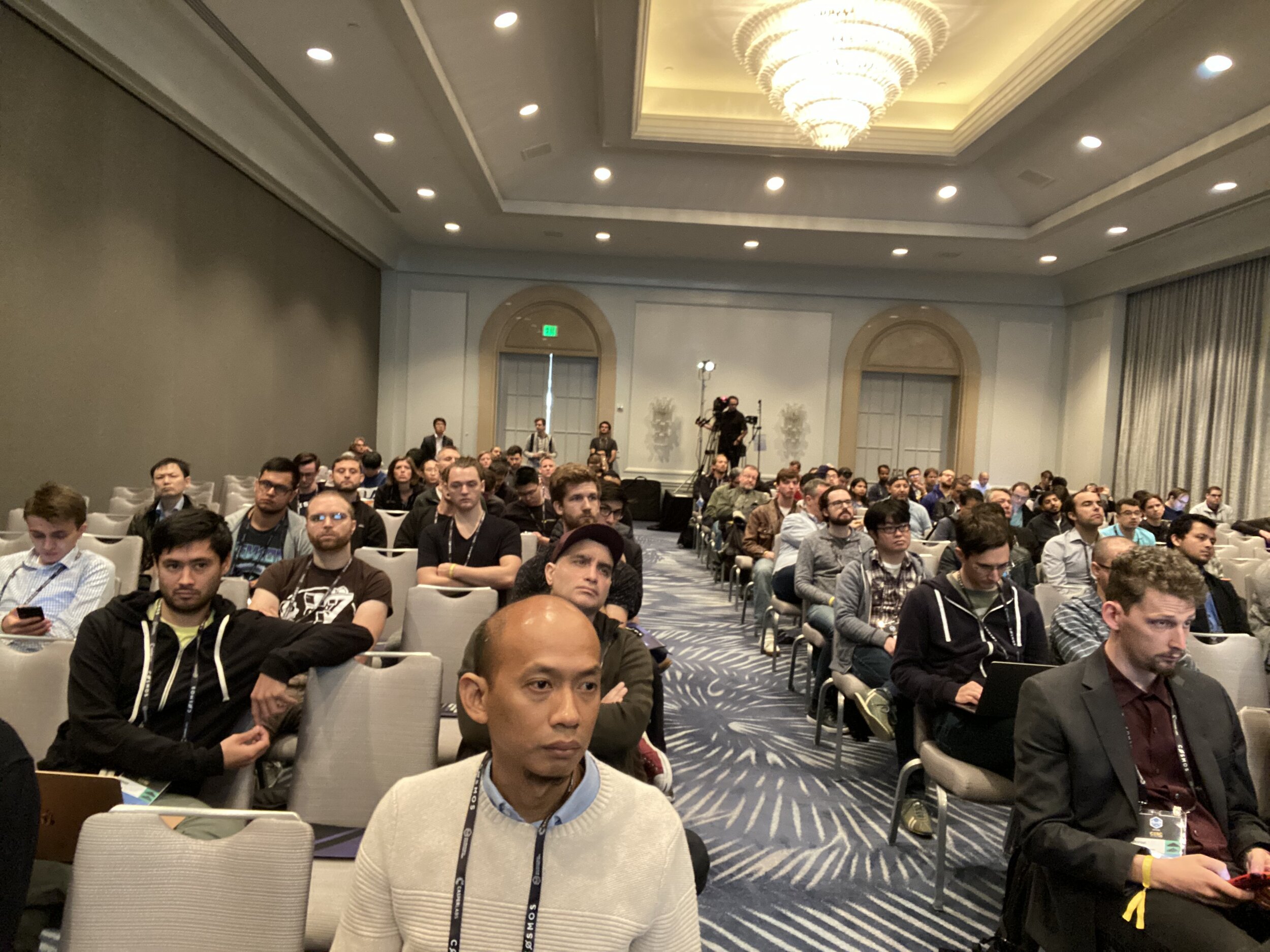

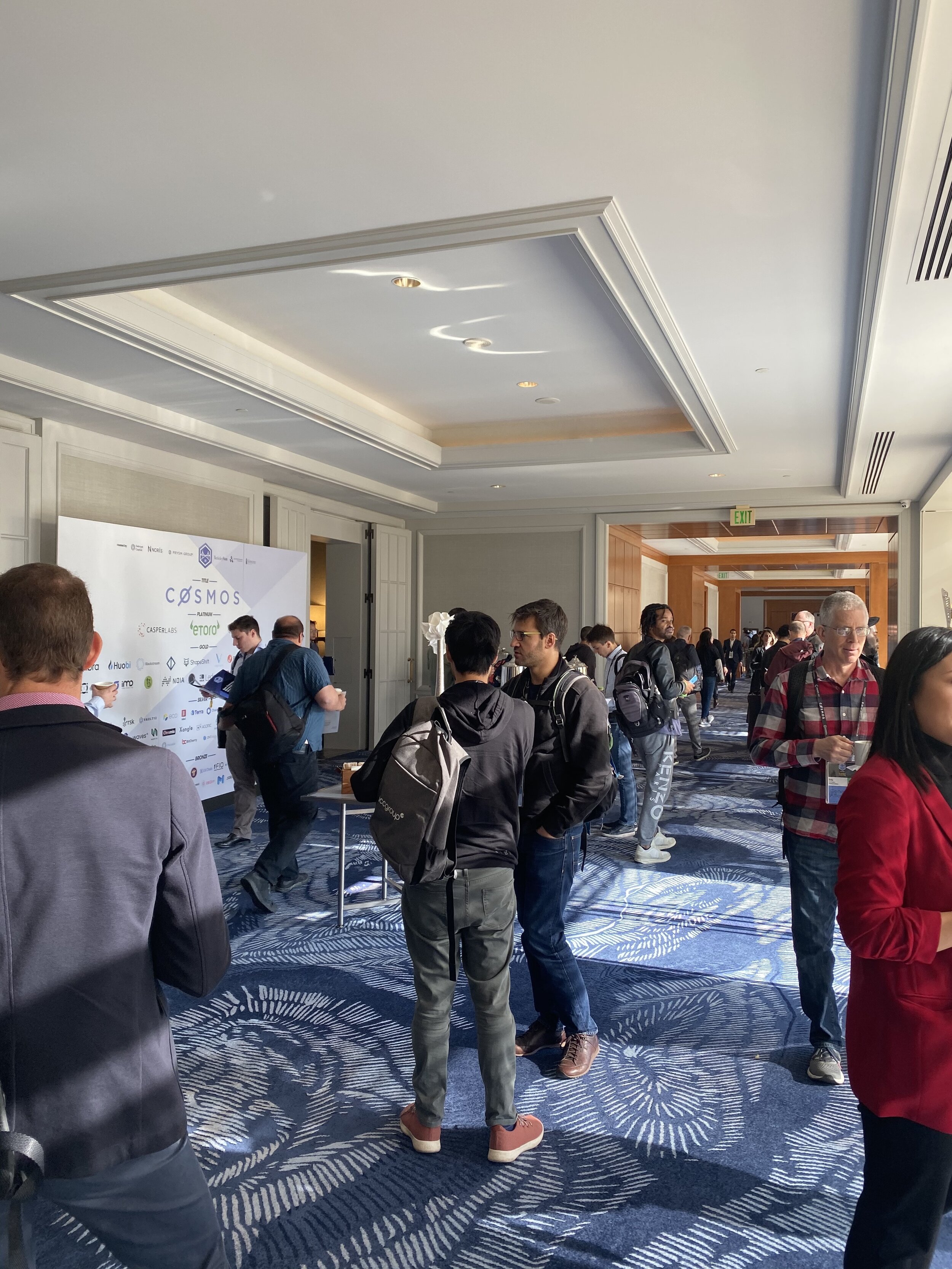

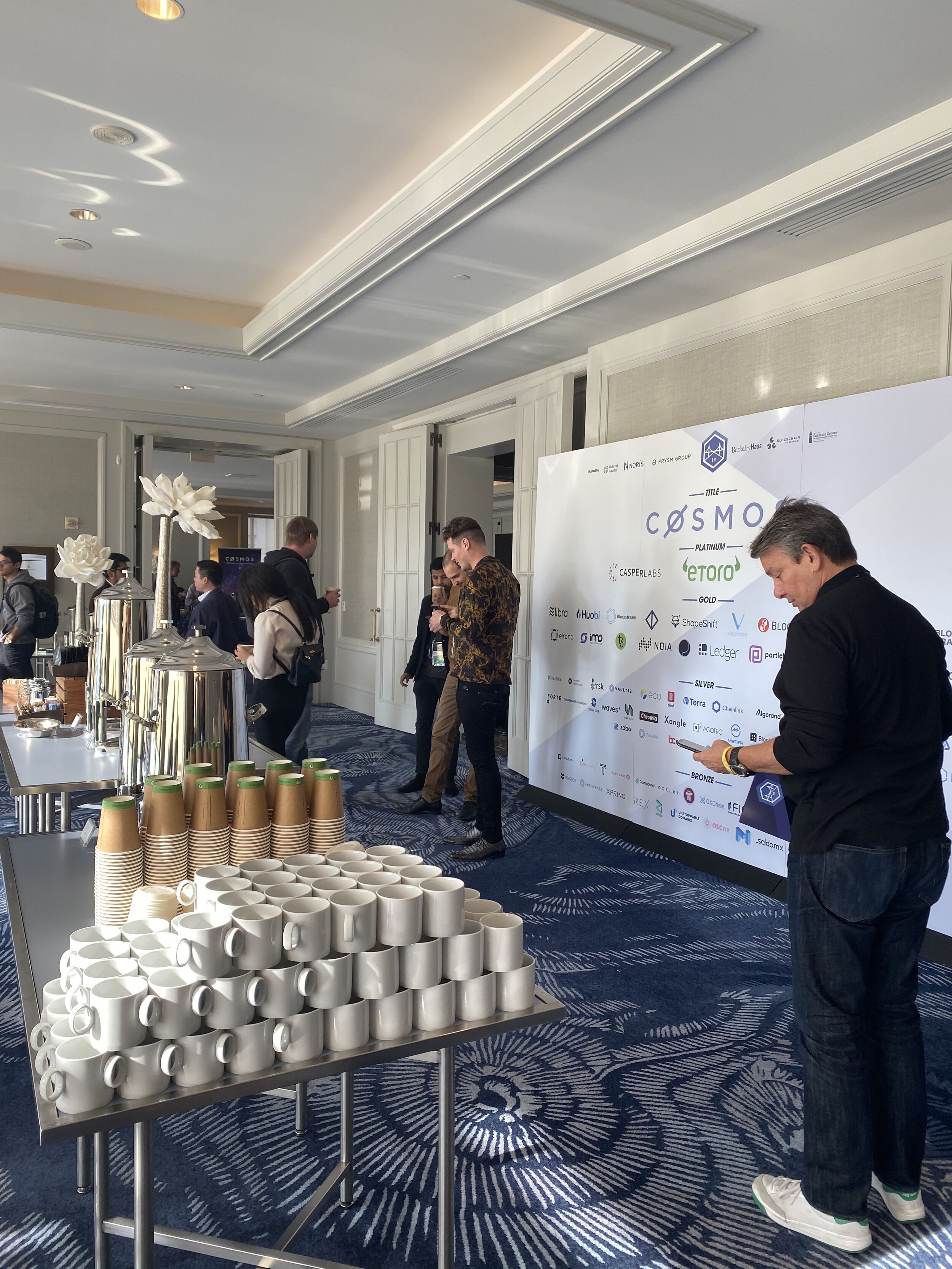
Select Session Overviews
As mentioned before, the full agenda for CESC and all of San Francisco Blockchain Week can be found here. CESC explores the economic security aspects of blockchain protocols, including game theory, incentive design, mechanism design and market design along with other topics related to crypto-economics security. CESC also aims to foster collaborations among researchers and practitioners working on these topics.
Since there is an East Stage and West Stage, it’s not possible to catch everyone, but here are some highlights from a few sessions today. Updates will be made as the event progresses. This conference, I am experimenting with covering less official sessions in order to conduct more interviews as well as release faster. If you have special requests for sessions or interviews, tweet to @audsinthecity and I’ll try to make it happen. I will not be able to make Epicenter this year due to travel.
(In)Stability for the Blockchain: Deleveraging Spirals and Stablecoin Attacks - Andreea Minca, Cornell University
Monday, October 28th, 2019 | 10:40am
Andreea Minca presented research done by her and Ariah Klages-Mundt at Cornell University regarding a model of non-custodial stablecoins.
A stablecoin is a cryptocurrency with an economic structure built on top of the blockchain that aims to stabilize the trading price
The aim of stablecoins = protocol that stabilizes market price/purchasing power, cryptocurrency with low volatility usable/adoptable in DeFi (decentralized finance) ecosystem
Types of stablecoins include custodial (reserve assets held off chain, like in the case of Libra) and non-custodial (on-chain contracts collateralized in cryptoassets)
The focus of their work is on the non-custodial side, on Layer 2
These non-custodial stablecoins are called DStablecoins, where risk is transferred from stablecoin holders to speculators, stablecoin holders receive a form of price insurance whereas speculators expect a risky return from a leveraged position, collateral is held in the form of cryptoassets which backs the stable and risky positions, an oracle provides pricing information from off-chain markets, a dynamic deleveraging process balances positions if collateral value deviates too much, and agents can change their positions through some pre-defined process.
The full whitepaper is here
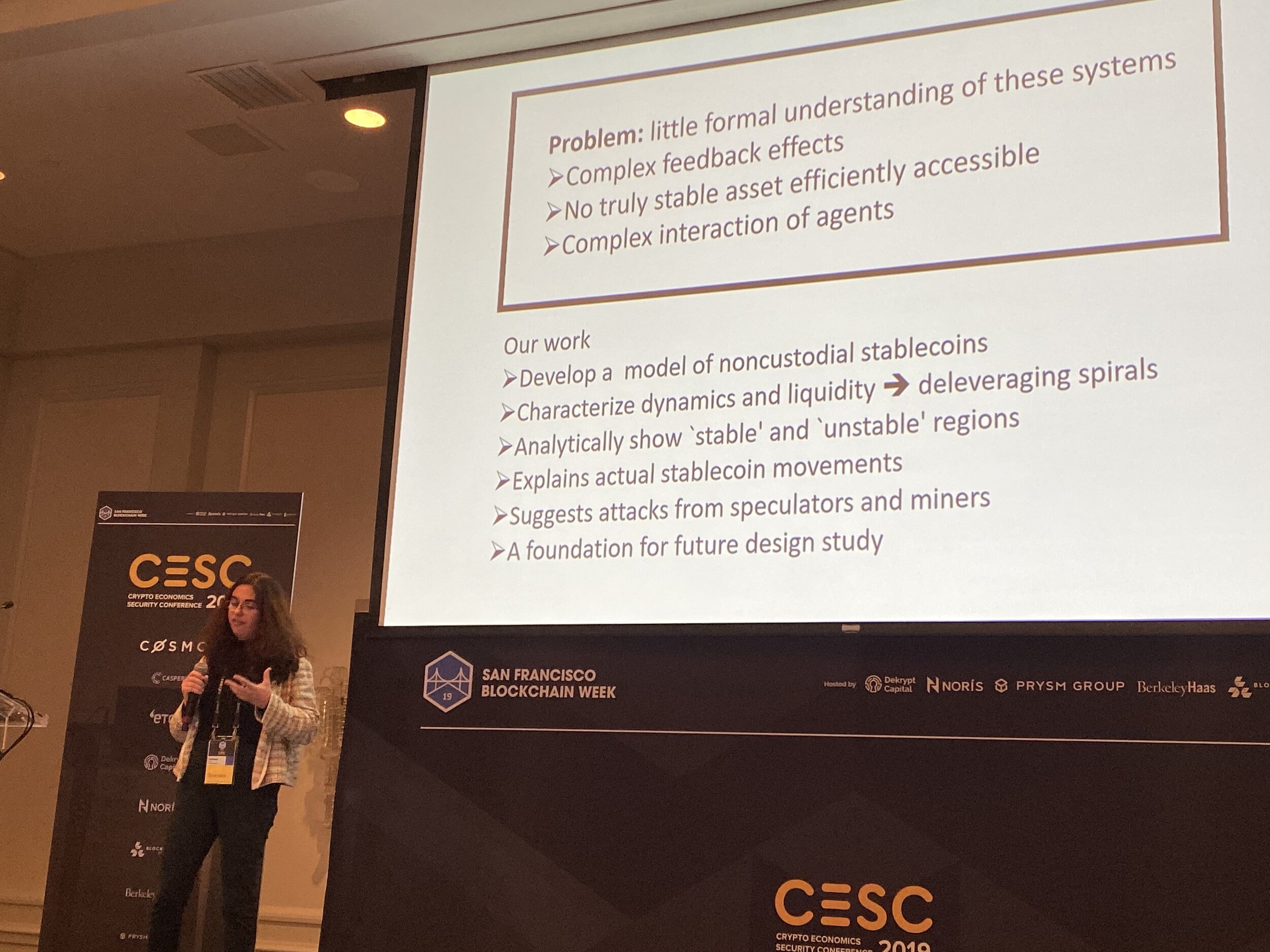
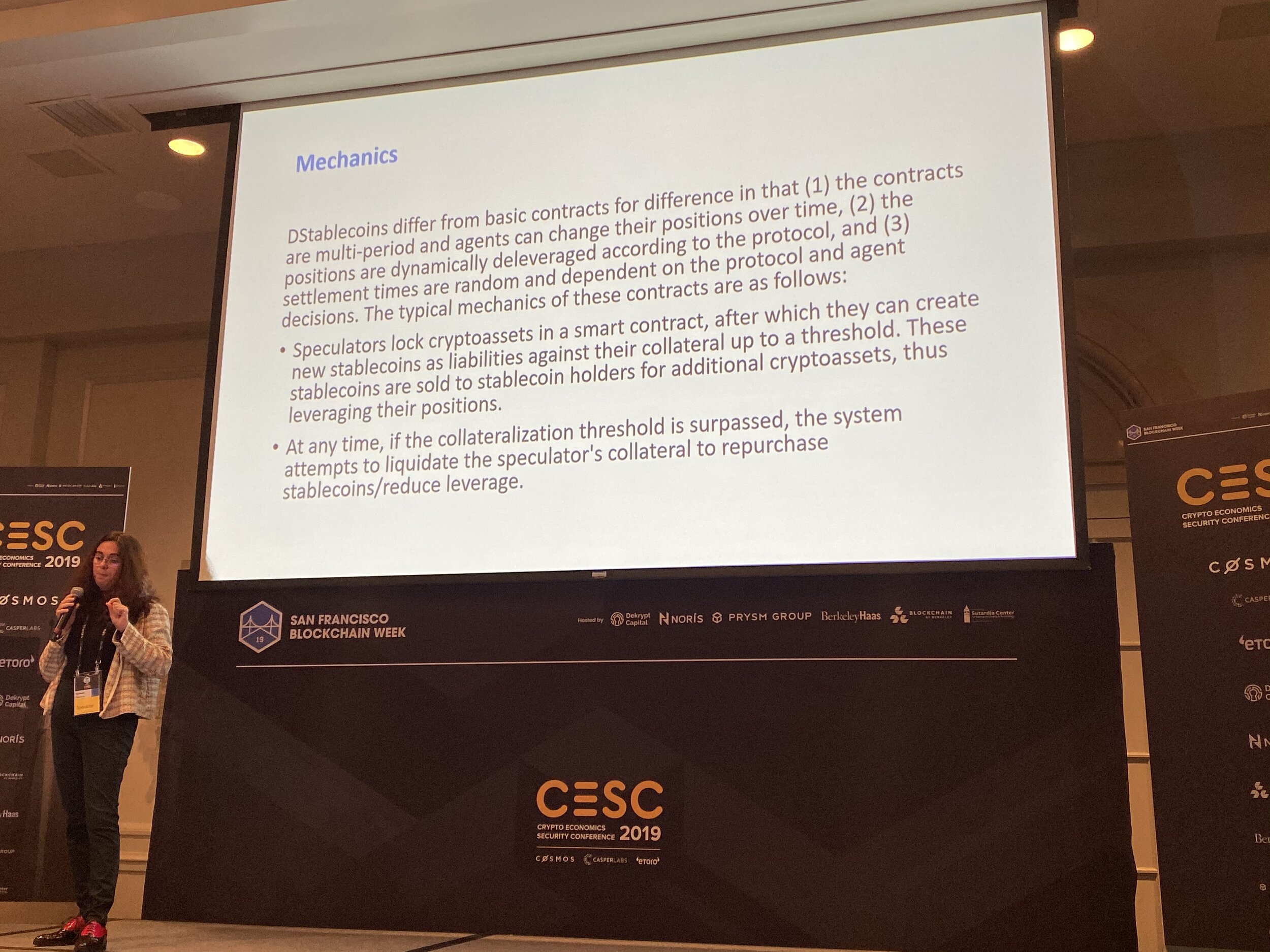
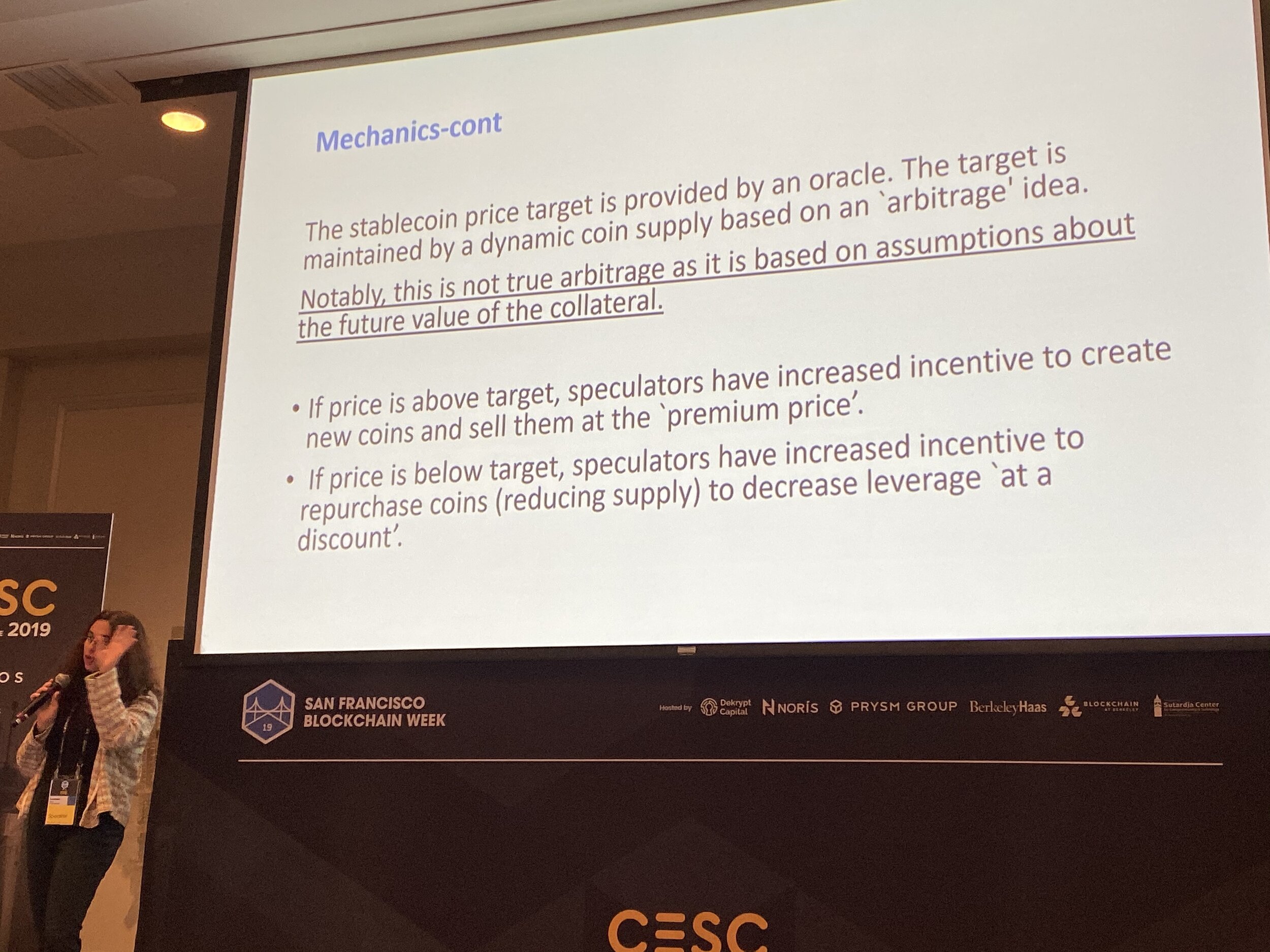

Nimble: A New Approach to Scalability - Dawn Song, UC Berkeley & Oasis Labs
Monday, October 28th, 2019 | 11:10am
Dawn Song, Professor of Computer Science at UC Berkeley and CEO of Oasis Labs, spoke about separating execution from consensus in order to achieve scalability.
Solving the problems of: untrusted infrastructure, untrusted applications, undesirable data leakages
With: scalable and verifiable smart contract execution, confidentiality-preserving smart contract execution, privacy-preserving analytics and machine learning
As blockchain applications go from simple cryptocurrency and smart contracts to ever more complex data-rich applications, scalability becomes more and more important
The challenge of existing architectures = nodes run all the same computations, which means there is redundant/wasted work, there is no parallelism, poorly-written contracts negatively affect everyone
If compute and consensus can be decoupled, each layer can be scaled and optimized independently
Which is what they are doing with Nimble. It is even being used in live use cases, like with Kara (incentivizing doctors and patients to share medical data)

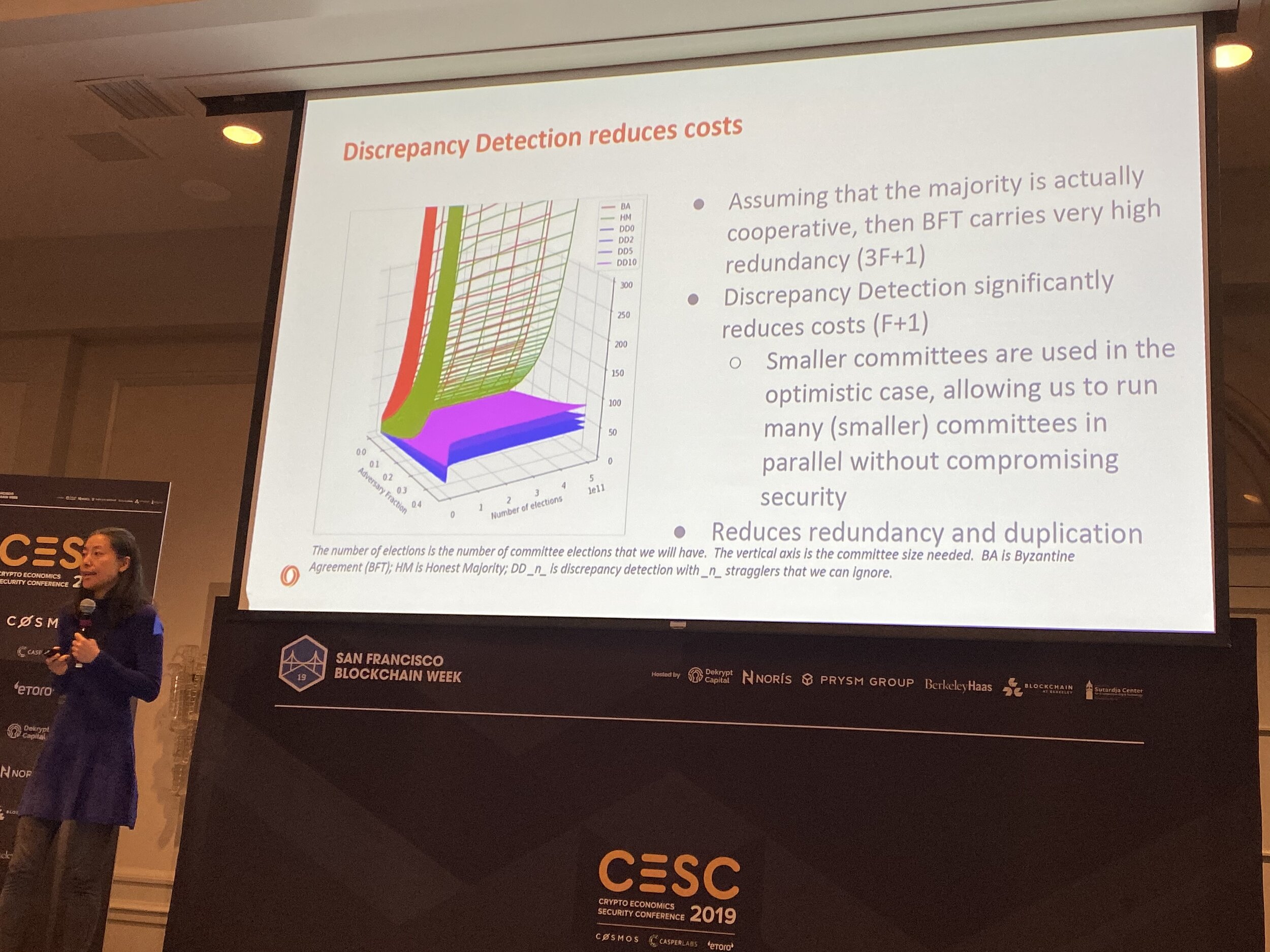
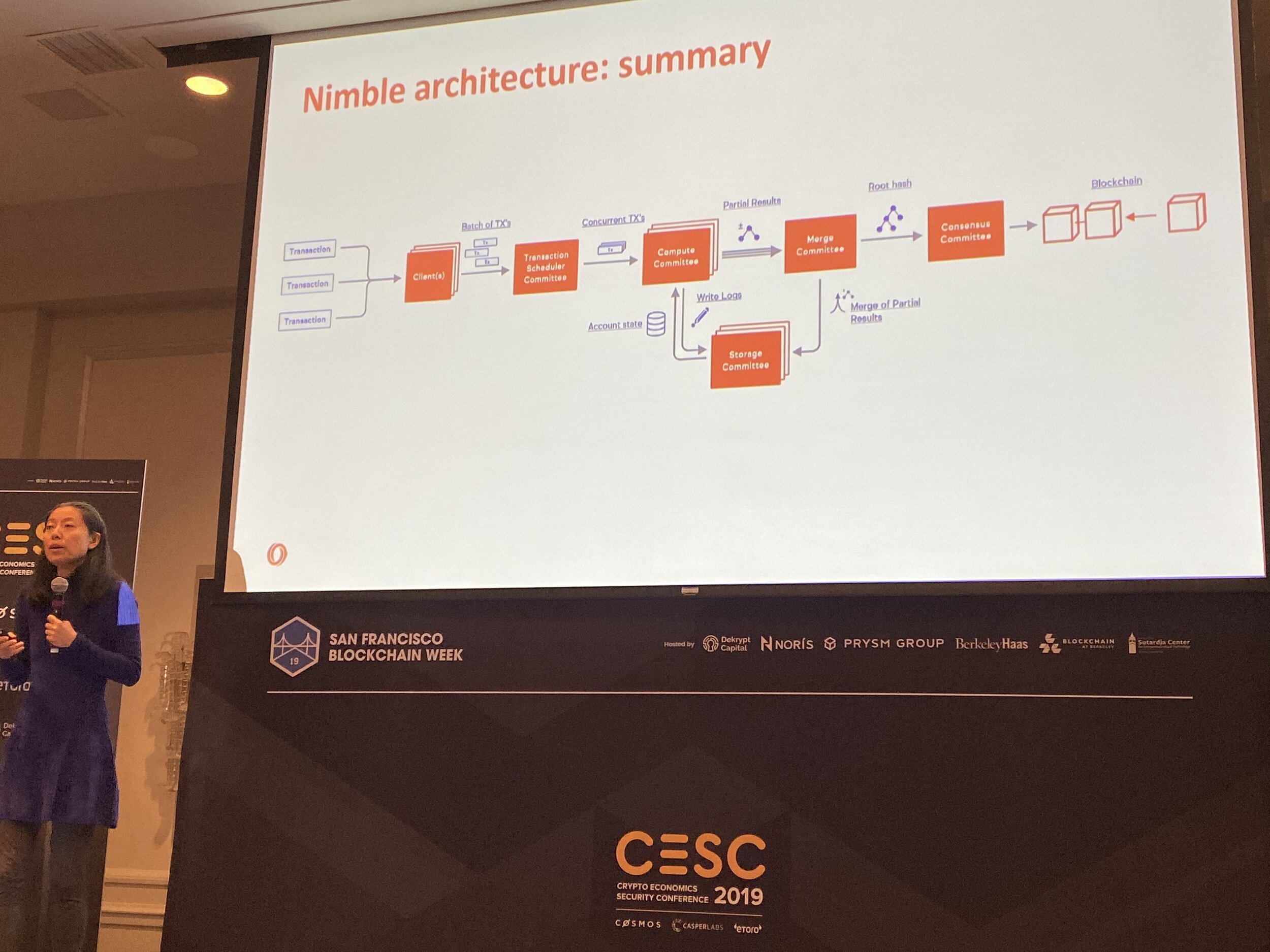
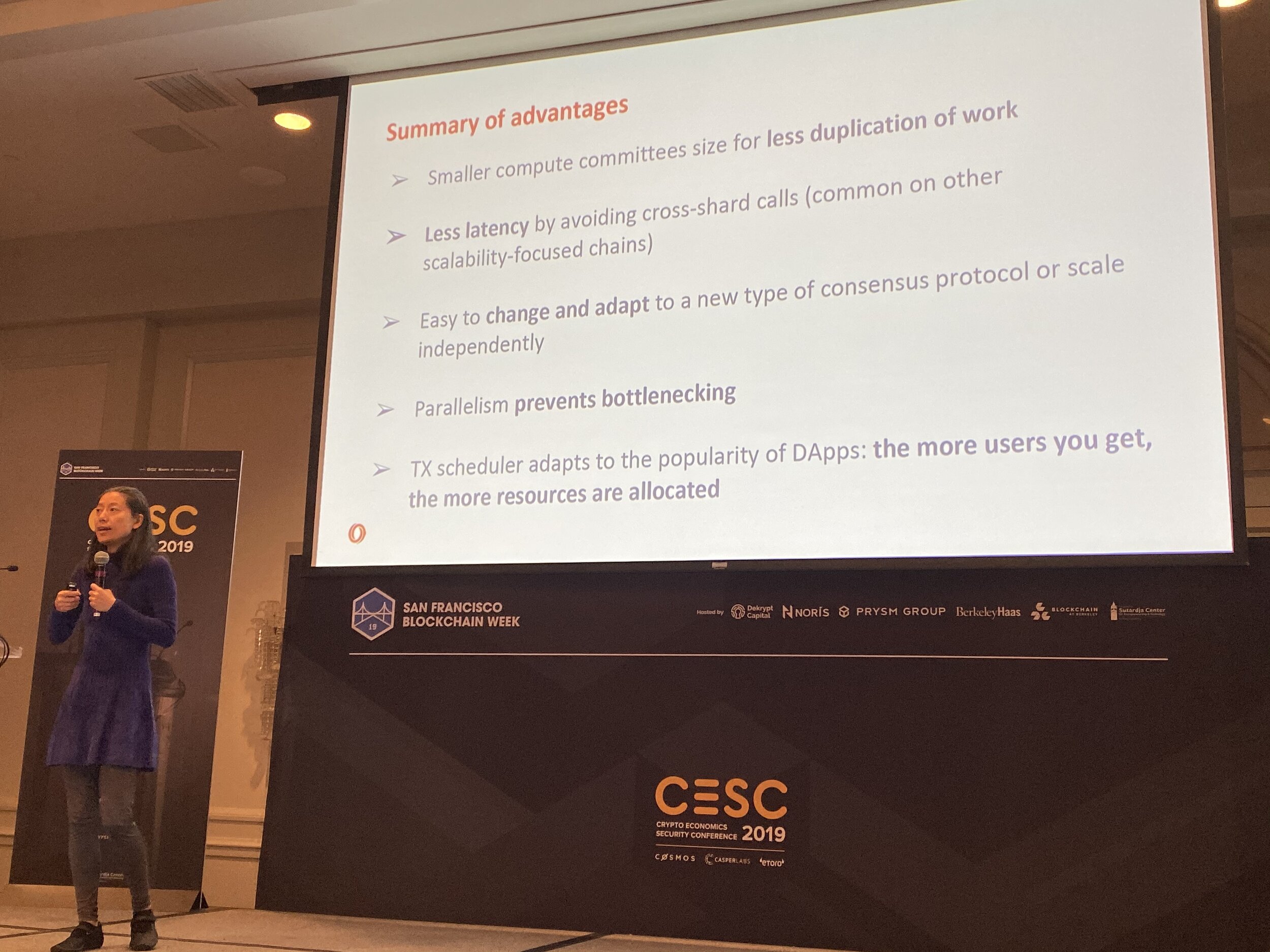
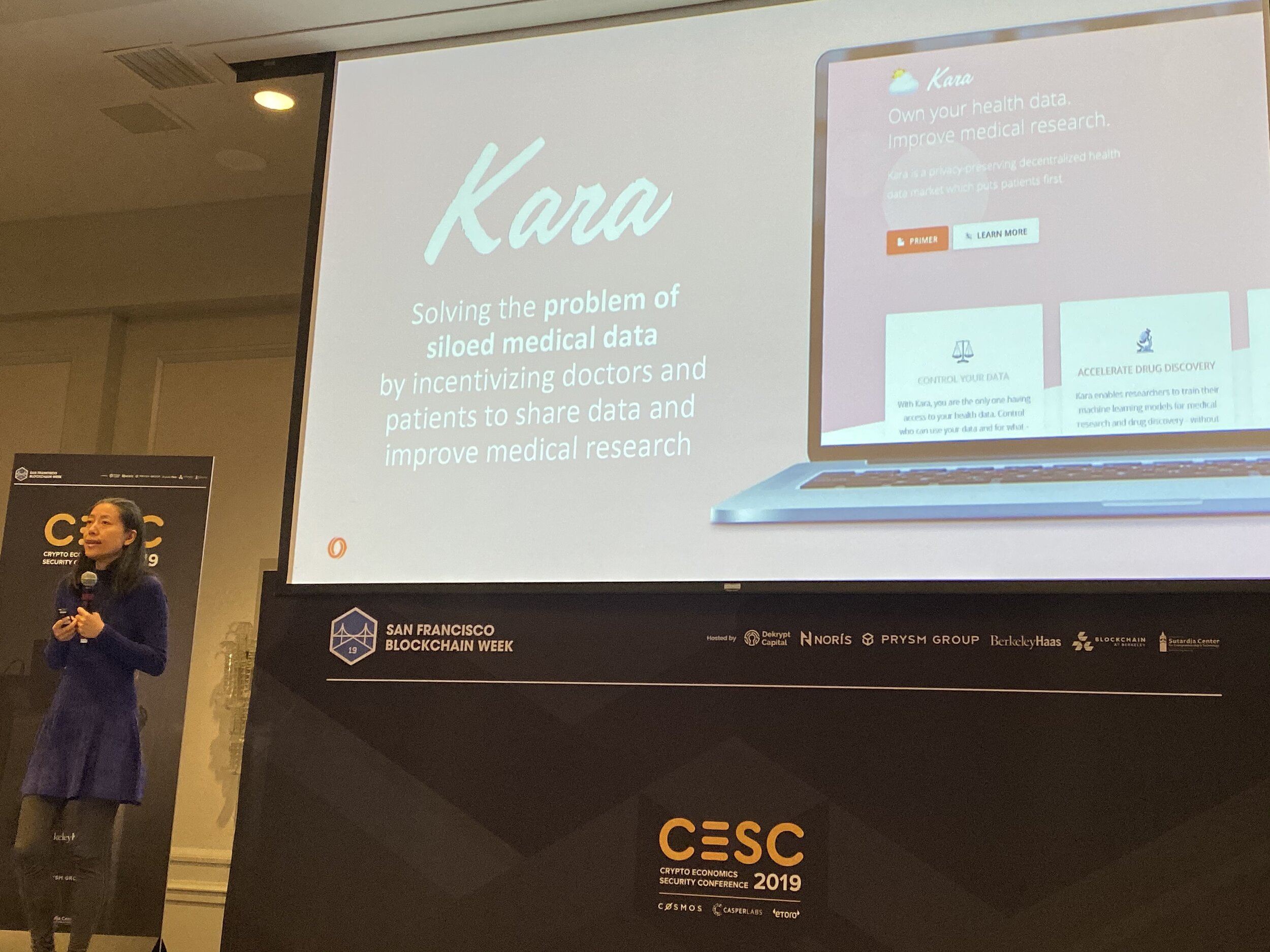
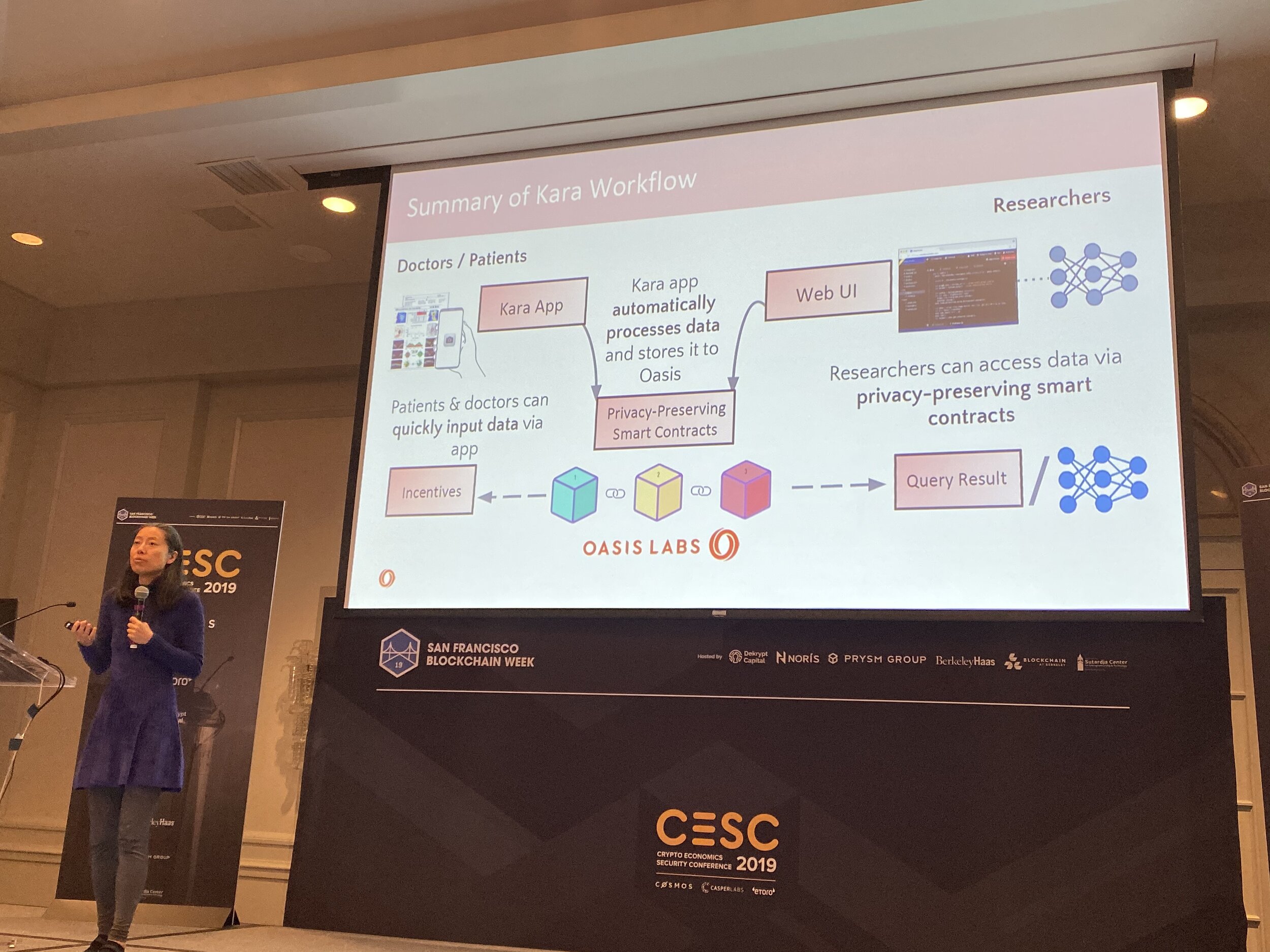
Economics of Libra - Christian Catalini, Libra & MIT Sloan
Monday, October 28th, 2019 | 5:30pm
Christian Catalini is on leave from MIT to focus on Libra and Calibra. He is the Head Economist of Calibra.
Key Objectives of Economic Design of Libra - trust in an efficient medium of exchange and payments network, trust in the Libra protocol and resulting market for financial services, trust in the governance and future evolution of the ecosystem
Trust in an Efficient Medium of Exchange - backed 1-1 by a pro rata share of a fungible pool of cash and very short-term government securities, protects users from wide fluctuations in purchasing power and value preservation. Designed to be a useful medium of exchange in daily transactions, especially across borders
Libra is Supposed to Complement Existing Currencies, NOT to Displace Existing Currencies - no new money creation, no change in money supply. The Libra Reserve will operate under a narrow, transparent, clear mandate to ensure value preservation. Libra may increase the velocity of money, however central banks already know how to handle this due to ongoing improvements in payment technology
Proof of Work leads to concentration in the node market and rewarding wasteful computation. In systems like Libra, relational contracts rely on off-chain reputation and local institutions to secure the network. Cryptography can be used to create a platform for formal global contracts
Libra Association - an independent non-profit Swiss membership organization with headquarters in Geneva, responsible for technical roadmap and network development, responsible for oversight of the Reserve but not active management, will interact only with Authorized Resellers not with end-users of Libra Coin, will apply for FINMA license as Payment System operator
Trust in the Governance and Future Evolution of the Libra Ecosystem - founding members are needed to drive utility and adoption, secure the network, and bootstrap a market for delegation (solving the “nothing at stake” problem of PoS systems). Similar economics to a standard setting organization - an independent and strong association is necessary for broad participation and adoption. Without distributed governance, organizations and individuals wouldn’t build on the same ecosystem, which reinforces fragmentation in payment and financial services. Designed to avoid “tragedy of the commons” and ensure resources are available for advancing the protocol and Layer 1 infrastructure over the long run
Libra is Designed to Encourage Competition and Innovation - Want to avoid the taxi medallion problem. Not a walled garden, but supposed to be an open technology standard where both incumbents and startups can compete on a level playing field. Clear rules to enter membership. Initial members only to drive utility to the coin, but the end goal is high interoperability. Often digital wallets do not interoperate because companies are trying to keep their captive audience
Why? What are We Trying to Solve? There are 1.7 billion people today without a bank account, this does not count people who are severely underbanked or those who are being charged exorbitant fees. However now there are also 1 billion people with a mobile phone. So using the phone to cover the last mile problem
Still very much a work in progress, and incorporating a lot of feedback
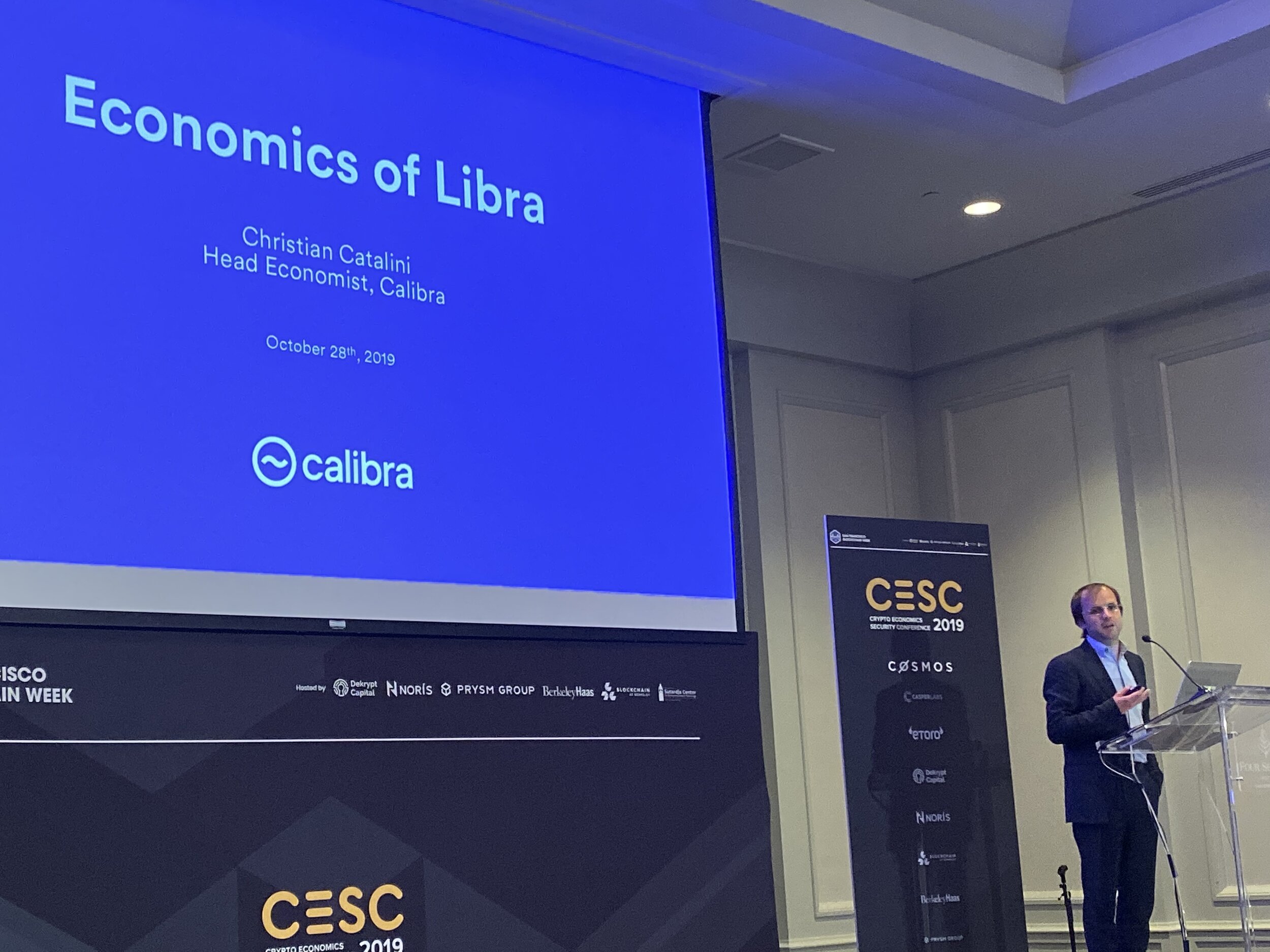
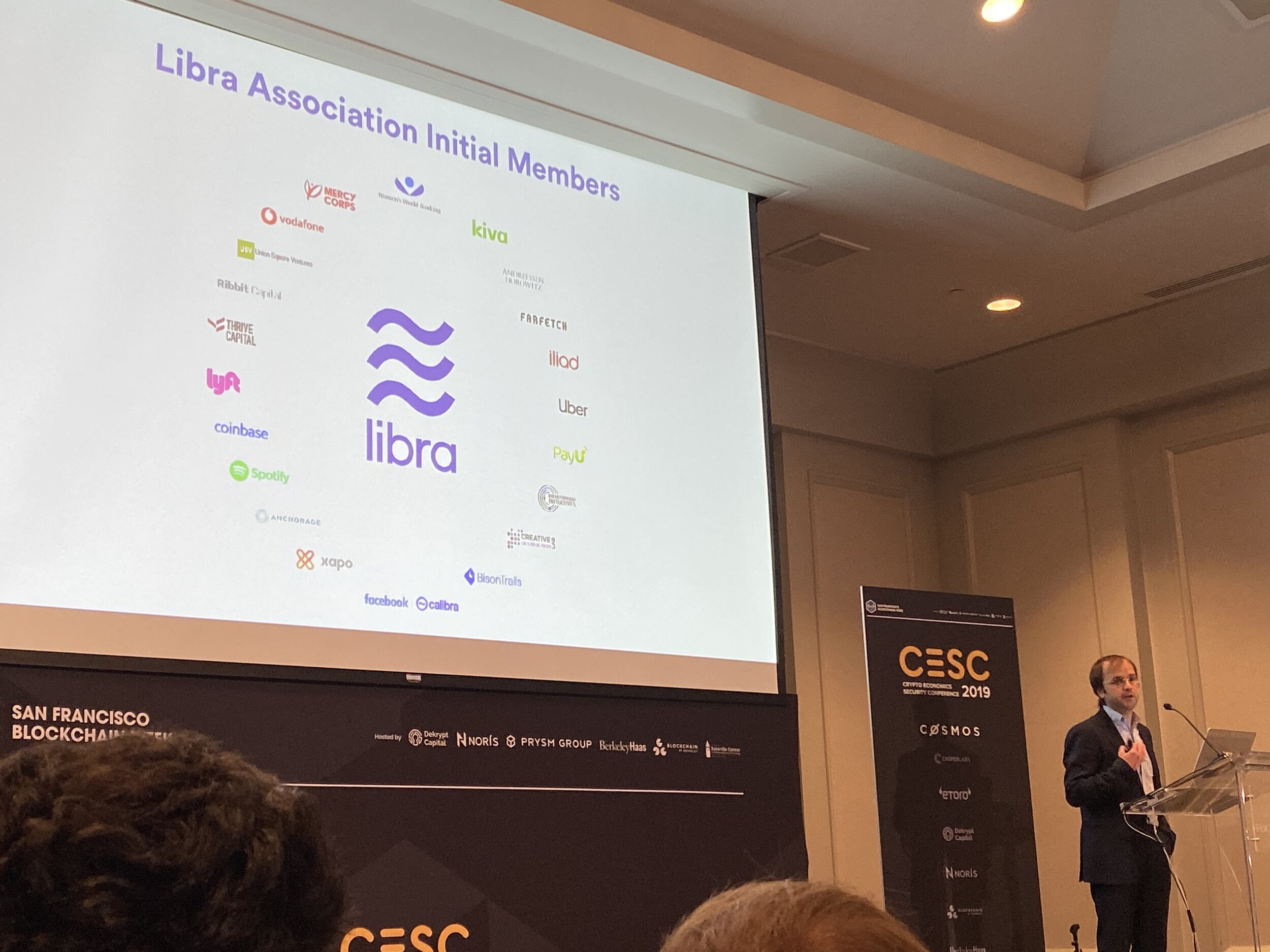
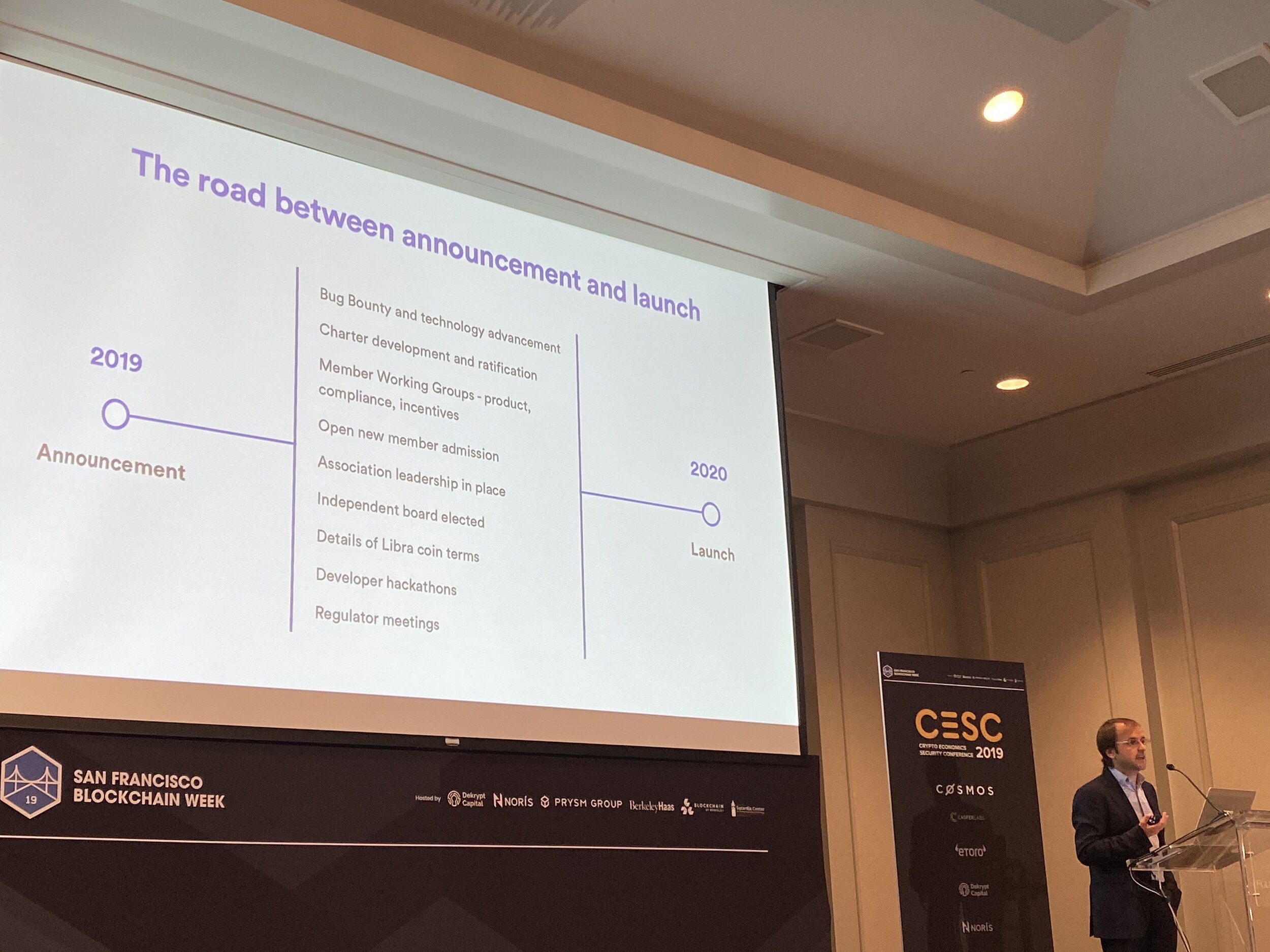
Interviews
Truebit - Jason Teutsch (Founder), Sami Mäkelä (Senior Core Developer)
The Trubit Protocol is a scalable verification solution for blockchains. Smart contracts can perform small computations correctly, however large computation tasks pose security risks for blockchains. Truebit counteracts this shortcoming via a trustless, retrofitting oracle which correctly performs computational tasks. Any smart contract can issue a computation task to this oracle in the form of WebAssembly bytecode, while anonymous “miners” receive rewards for correctly solving the task.
Jason gave a talk today at 2:20pm on Retrofitting a Two-way Peg Between Blockchains on the West Stage, between Doge and Eth. You can catch Sami tomorrow at 5:05pm on the West Stage discussing the Truebit Stable Computation Token, where he will discuss 2 possible tokens : one of which is a stablecoin and one for deposits.
Sami and Jason from Truebit
Perlin - Ajay Prakash (Head of Product), Kenta Iwasaki (CTO)
Perlin is working on a public leaderless proof of stake blockchain, focused on scalability/throughput, the developer experience, and adoption. They are here at San Francisco Blockchain Week to spread the word about their Wavelet testnet. On the adoption front, they have managed to do quite a lot - they are officially backed by the Singapore government to deploy blockchain pilots, and are also working with the governments of India, Montenegro, and the Dubai Chamber of Commerce.
They are also the official blockchain partner of the world’s largest business organization, the International Chamber of Commerce (ICC), which has 45 million member businesses in 130 countries as members, including Amazon, Paypal, Coca Cola and McDonalds. Perlin is helping the ICC with a platform called TradeFlow, a system that modernizes the paper trail currently necessary in order to move goods from country to country. It can take 30 to 45 days and up to 10,000 emails to complete all the paperwork with multiple parties to move one product under the system in use today, which is a clear potential application for blockchain. TradeFlow maps out the entire process between multiple parties and makes the contributions of each party obvious since communication is isolated to the system. Countries find the product interesting because no one country has control over the system, therefore nobody has the upper hand. TradeFlow is built on a Wavelet private deployment, which is a DAG built on snowball/avalanche. In addition to TradeFlow, Perlin has a provenance system called Clarify, which tracks integrated viscose-rayon production. Look out for an announcement from Perlin later this week or next week, and if you are curious to learn more, Kenta will be speaking at Epicenter on November 1 on the Technical Stage at 11:30am about Wavelet. He will also be running a dev workshop on November 1 at 2pm.
Ajay and Kenta from Perlin
Stay Tuned For More Sessions and Interviews
Videos are being recorded of each of the CESC talks (however I’m not sure how you can access them at the moment). For upcoming Epicenter, you can check out the livestream with DLive (decentralized live streaming platform built on the testnet of Lino blockchain).
For more from CESC Day 2, including in-depth sessions with Monica Quaintance of Kadena and Vitalik of Ethereum, go here







